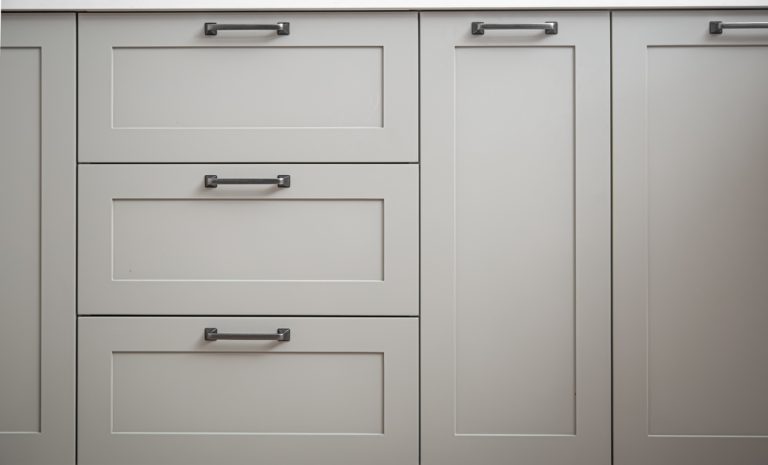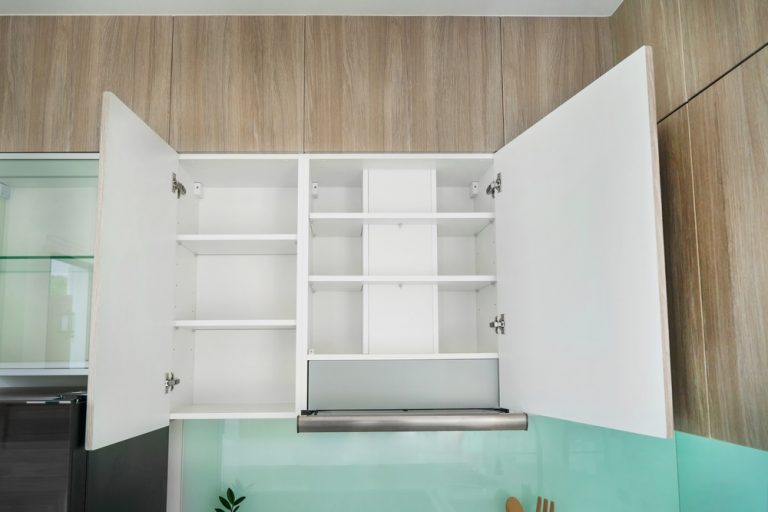How to Brighten a Dark Kitchen Without Windows?

A kitchen without windows can feel dark, cramped, and uninviting. Natural light plays a big role in making a space feel open and airy, but if your kitchen lacks windows, it doesn’t mean you have to settle for a dim, dreary space. There are several creative ways to enhance light, brighten up the room, and make it feel more welcoming.
In this guide, we’ll explore various ideas on how to brighten a dark kitchen without windows, using lighting, color, and strategic design choices to transform your kitchen into a brighter, more enjoyable space.
Maximize Artificial Lighting
The absence of natural light makes it essential to maximize the use of artificial lighting in your kitchen. A combination of ambient, task, and accent lighting can make a world of difference in brightening up a dark kitchen.
Ambient Lighting
Ambient lighting is the foundation of your kitchen’s overall brightness. Installing overhead lights, such as recessed ceiling lights or flush mount fixtures, will provide general illumination across the entire space. Opt for bright, energy-efficient LED lights to maximize brightness, and choose a cool or neutral white light to mimic natural daylight.
Pendant lights over kitchen islands or dining areas can also add functional lighting while contributing to the kitchen’s style. Consider using multiple light sources spread evenly throughout the kitchen to avoid shadows and dark spots.
Task Lighting
Task lighting is focused lighting used in areas where you perform specific activities, such as cooking or preparing food. Installing under-cabinet lighting is a great way to brighten up your countertops and provide illumination for food prep. LED strip lights or puck lights placed under the upper cabinets can flood the countertops with light, eliminating shadows and making the kitchen feel more open.
Accent Lighting
Accent lighting adds depth and dimension to your kitchen. Consider using light strips inside glass-front cabinets or adding a light fixture to highlight open shelving. This subtle lighting will not only brighten the space but also enhance visual interest.
Use Light, Reflective Colors
One of the simplest ways to address how to brighten a dark kitchen without windows is by choosing light, reflective colors for your kitchen’s walls, cabinetry, and furnishings. Light colors bounce light around the room, creating a more open and bright atmosphere.
White Walls and Cabinets
White is the go-to color for brightening up dark spaces. Painting your walls and cabinets white can instantly make your kitchen feel lighter and more expansive. If pure white feels too stark, opt for off-white or soft pastel shades like light beige, cream, or pale gray. These colors still reflect light effectively while adding warmth and softness to the room.
Glossy Finishes
In addition to light colors, incorporating glossy or reflective finishes on your cabinets, countertops, or backsplash can help reflect light and make the space feel brighter. Glossy tiles or polished stone surfaces reflect both natural and artificial light, contributing to a more radiant kitchen environment.
Metallic Accents
Adding metallic finishes, such as chrome, brass, or stainless steel, can further enhance light reflection in your kitchen. Metallic fixtures and hardware on cabinets, faucets, and lighting fixtures can catch and reflect light, subtly brightening the space without overwhelming the design.
Also Read – How to Vent a Kitchen Sink Under a Window?
Incorporate Mirrors and Reflective Surfaces
Mirrors are one of the best tools for enhancing light in a room, especially in windowless spaces like a dark kitchen. Incorporating reflective surfaces can visually enlarge the space and bounce light throughout the room.
Mirror Backsplash
A mirror backsplash is a creative way to add both style and brightness to your kitchen. A mirrored surface behind your stove or countertops reflects light from other sources, making the kitchen feel larger and more open. This reflective quality can also add a touch of modern elegance to your kitchen design.
Mirrored or Glossy Tiles
If a full mirror backsplash feels too bold, consider using mirrored or glossy tiles in your kitchen. These tiles can be used as part of your backsplash or even on accent walls, adding subtle light-enhancing effects without dominating the space.
Glass and Glossy Cabinet Doors
Switching out solid cabinet doors for glass-fronted ones can introduce a sense of depth to the room. Glass allows light to pass through and reflect off the surfaces inside the cabinets, contributing to an overall brighter space. Adding interior lighting to glass-front cabinets can also enhance this effect.
Optimize Layout and Space Efficiency
A cluttered, overly busy kitchen can feel darker and more cramped, especially without natural light to balance it out. Optimizing the layout and keeping the kitchen organized can help in how to brighten a dark kitchen without windows by making the room feel more open and airy.
Open Shelving
Instead of solid upper cabinets, consider using open shelving to keep the space feeling lighter and less closed off. Open shelves provide storage while reducing visual bulk, allowing more light to flow through the kitchen. Keep the shelves tidy with minimal décor or neatly arranged kitchenware to maintain an uncluttered look.
Declutter Countertops
Reducing clutter on countertops can make your kitchen feel larger and brighter. Keep only essential items on the counters and find creative storage solutions for the rest. This minimalistic approach helps prevent the space from feeling closed in and allows light to bounce more freely.
Keep the Floor Space Open
In small, dark kitchens, maintaining an open floor space can make a big difference. Avoid placing too many bulky items or furniture that obstructs the flow of light. A more open layout gives the illusion of a brighter, more spacious kitchen.
Add Pops of Bright Color
While light, neutral colors are excellent for reflecting light and creating brightness, adding pops of bright color can help make the space feel more lively and vibrant. Introducing color through décor or accents brings visual interest and personality to the kitchen.
Bright Accessories
Add colorful kitchen accessories, such as bright dishware, decorative bowls, or vases, to bring a cheerful vibe to your kitchen. Colors like yellow, turquoise, or coral can inject energy into the space, making it feel less dim. These accents can be easily changed out as your style or the seasons evolve.
Colorful Backsplash or Artwork
If you want to introduce a more permanent pop of color, consider installing a vibrant backsplash or hanging bright artwork on the walls. This splash of color can break up the monotony of an all-white kitchen and create a more dynamic visual effect.
Enhance the Ceiling
Don’t forget that the ceiling plays a role in making your kitchen feel bright and open. Lightening up the ceiling can help reflect light down into the room, creating a more spacious feel.
White or Light Ceiling Paint
Painting the ceiling white or a very light color can reflect light from your fixtures and make the room feel taller and brighter. This is especially effective in kitchens with low ceilings, where dark colors could make the space feel more enclosed.
Install a Reflective Ceiling Fixture
Consider installing a ceiling fixture with a reflective surface, such as a light fixture with a metallic or glass finish. This can help reflect light throughout the kitchen, further enhancing brightness.
Conclusion
Learning how to brighten a dark kitchen without windows involves maximizing lighting, using light colors, incorporating reflective surfaces, and optimizing your kitchen layout. With the right design choices, you can transform a dim kitchen into a bright, welcoming space, even without the benefit of natural light. By following these tips, you’ll be able to create a kitchen that feels open, airy, and full of life.






